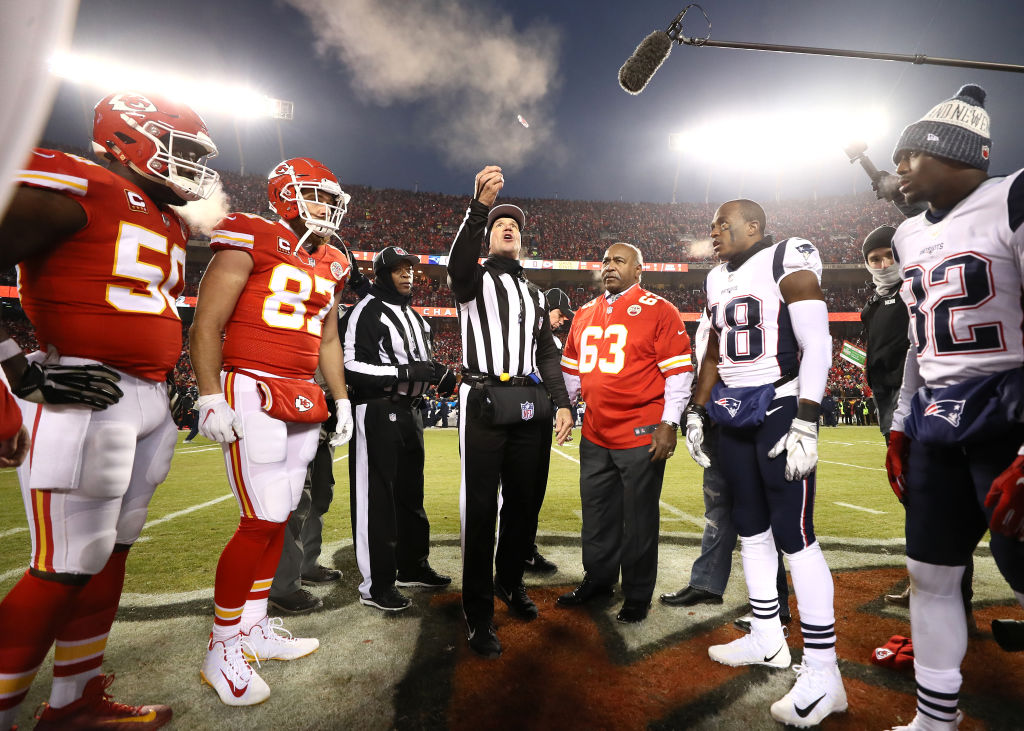NFL
6 of the Strangest Rules in the NFL

Week one is kicking off and the NFL hype is mounting nationwide. With the start of a new season, it’s always important to take a look at any new rules being put into effect, as the NFL is known to do each year. Most of this year’s new rules make sense, but the league’s rule book has seen its fair share of strange things throughout the years. Let’s take a look at a few of the most bizarre.
The drop kick
In 2005, Patriots backup quarterback Doug Flutie made headlines when he successfully pulled of a drop kick for the first time since 1941. The drop kick is successful when the quarterback drops the ball, lets it bounce off the ground, kicks it, and gets it through the goalposts for an extra point.
It’s still in the NFL rule book today but hasn’t been done since Flutie pulled it off against the Miami Dolphins (the Dolphins won, regardless of Flutie’s cool move).
Coin toss loss
The coin toss is a recognizable part of any NFL game, either at the beginning of the first quarter or the beginning of overtime, but did you know that it’s possible for a team to automatically lose the coin toss?
That’s right, if a team fails to get their players on the field in time to observe the coin toss, their team technically forfeits the coin toss and the opposing team wins the right to choose if they’ll kick off or receive first.
The fair catch kick
If a receiving player calls for a fair catch after a kickoff or punt, they actually have more options than you may think. They can do a fair catch kick.
A fair catch kick is when a receiver calls for a fair catch, then attempts to kick the ball through the goal posts for three points. It can be either a place kick or a drop kick, but it has to be from the point of the catch. This was last attempted by the 49ers in 2013, but hasn’t been done successfully since 1976 by Ray Wersching of the San Diego Chargers. You’d be lucky to see this in action, as it is most definitely one of the strangest rules in the NFL.
Fielding kicks out-of-bounds
If a kickoff ends up out-of-bounds before a player touches it, the receiving team defaults to the 40-yard line. That’s all fine and dandy, but if a player steps out-of-bounds and then touches the ball while it’s still live and on the field, the ball is considered out-of-bounds as well.
Why would a player do that? It would turn what might have been an excellent kickoff into a terrible one that went out-of-bounds. The receiving team comes out with the ball on the 40, and we’re all left scratching our heads. Packers running back Ty Montgomery pulled this one off in 2016 against the Lions, to much confusion.
Snaps thrown through the quarterback’s legs
When a center snaps the ball to the quarterback, the goal is for the quarterback to catch it. Obviously. If the ball instead flies between the quarterback’s legs, the NFL’s rule is that the quarterback must be the next person to touch it.
Anyone else to touch the ball before the quarterback, offense or defense, gets the play called as a false start by the offense. This last happened during a Bears vs. Eagles game in 2007.
Deciding who gets the ball after a touchdown
This one may be the strangest rule of them all, but the actual rule concerning what happens after a team scores a touchdown states that the team who did not score the touchdown gets to decide who gets the ball next.
Obviously, it’s always themselves. Teams used to meet on the field and discuss who would get the ball next, but now it’s just one of the many stange rules they’ve never gotten rid of.











